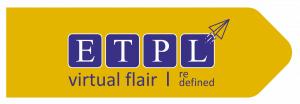The education sector is evolving rapidly, and institutions are increasingly adopting technological solutions to keep pace. In 2025, upgrading to a modern education ERP software will be more crucial than ever. This shift will not only enhance operational efficiency but also cater to the dynamic needs of students, educators, and administrators.
Understanding Education ERP Software
Education ERP software refers to a comprehensive system designed to manage and automate an institution’s administrative, academic, and financial processes. Unlike traditional tools, modern ERP solutions integrate multiple functions into a single platform, ensuring seamless workflows and real-time data management. These systems are tailored to the unique requirements of educational institutions, offering functionalities such as student information management, exam scheduling, and resource allocation.
Benefits of Upgrading to Modern Education ERP Software
Enhanced Administrative Efficiency
Modern education ERP software streamlines routine tasks such as admissions, attendance, and fee collection. By automating these processes, institutions can reduce manual errors, save time, and focus on delivering quality education. For instance, admissions workflows can be digitized, eliminating paperwork and reducing the time required to process applications. Attendance tracking becomes effortless with automated systems that integrate with biometric or RFID technologies.
Improved Data Security and Accessibility
Data security has become a top priority for educational institutions. Modern ERP systems offer advanced encryption, secure backups, and role-based access, ensuring that sensitive information remains protected. Additionally, cloud-based systems enable anytime, anywhere access to data. This ensures that faculty can access academic records remotely, while parents can monitor their child’s progress through dedicated portals.
Seamless Communication Across Stakeholders
Effective communication among students, parents, and faculty is essential for academic success. Modern ERP software integrates communication tools, making it easier to share updates, schedules, and progress reports in real time. Notifications about exam schedules, fee reminders, and important events can be sent instantly, ensuring that no stakeholder is left uninformed.
Key Features of Modern Education ERP Software
Automated Processes: Automation of administrative tasks reduces the workload on staff, enabling them to focus on strategic activities. For example, fee management modules can send reminders to parents, calculate late fees, and generate receipts automatically.
Customizable Modules: Tailored solutions cater to the specific needs of different institutions. Schools, colleges, and universities can choose modules such as hostel management, library management, or alumni tracking based on their requirements.
Mobile Accessibility: Mobile-friendly interfaces allow users to access the system from any device. This feature ensures that teachers can mark attendance on-the-go, and students can check timetables from their smartphones.
Real-Time Analytics: Insights into performance metrics support data-driven decision-making. For instance, dashboards can highlight trends in student performance, enabling educators to address issues proactively.
Integration Capabilities: Integration with other tools and platforms ensures a seamless user experience. Whether it’s linking with a Learning Management System (LMS) or third-party payment gateways, modern ERP solutions provide comprehensive connectivity.
Learn More: Do Education ERPs Help Cut Costs?
Why 2025 is the Right Time to Upgrade
The year 2025 is expected to witness a surge in digital transformation across industries, including education. Factors driving this trend include:
Increased Demand for Personalized Learning: Modern ERP systems facilitate personalized education through data-driven insights. For instance, adaptive learning modules can recommend resources based on a student’s strengths and weaknesses.
Regulatory Compliance: Upgrading ensures adherence to new data protection and education standards. Institutions can avoid penalties by ensuring their systems comply with GDPR or similar regulations.
Future-Proofing Institutions: Staying competitive in a tech-driven world requires adopting cutting-edge solutions. By upgrading, institutions can ensure they remain relevant and attractive to tech-savvy students and parents.
In conclusion, upgrading to a modern education ERP software in 2025 will be essential for educational institutions aiming to enhance efficiency, security, and communication. As the demands of the education sector grow, investing in the right ERP solution will empower institutions to stay ahead of the curve. By embracing this technology, institutions can create an environment that supports academic excellence and operational efficiency.
FAQs
1. What is education ERP software?
Education ERP software is a digital platform designed to manage and automate administrative, academic, and financial processes within educational institutions. It ensures seamless workflows and improves overall efficiency.
2. Why should schools upgrade their ERP software in 2025?
Upgrading ensures institutions benefit from the latest features, improved security, and compliance with evolving regulations, making operations more efficient and effective. Additionally, it helps in adopting future-ready solutions to meet changing demands.
3. How does modern education ERP software improve communication?
It integrates tools for sharing updates, schedules, and reports, facilitating real-time communication among students, parents, and staff. Notifications and alerts can be customized to ensure timely dissemination of information.
4. Is education ERP software scalable for growing institutions?
Yes, modern ERP solutions are designed to scale, accommodating the growing needs of expanding institutions. New modules and features can be added without disrupting existing operations.
5. What factors should be considered when choosing an education ERP software?
Key factors include ease of use, customization options, data security, integration capabilities, vendor support, and the scalability of the solution.














